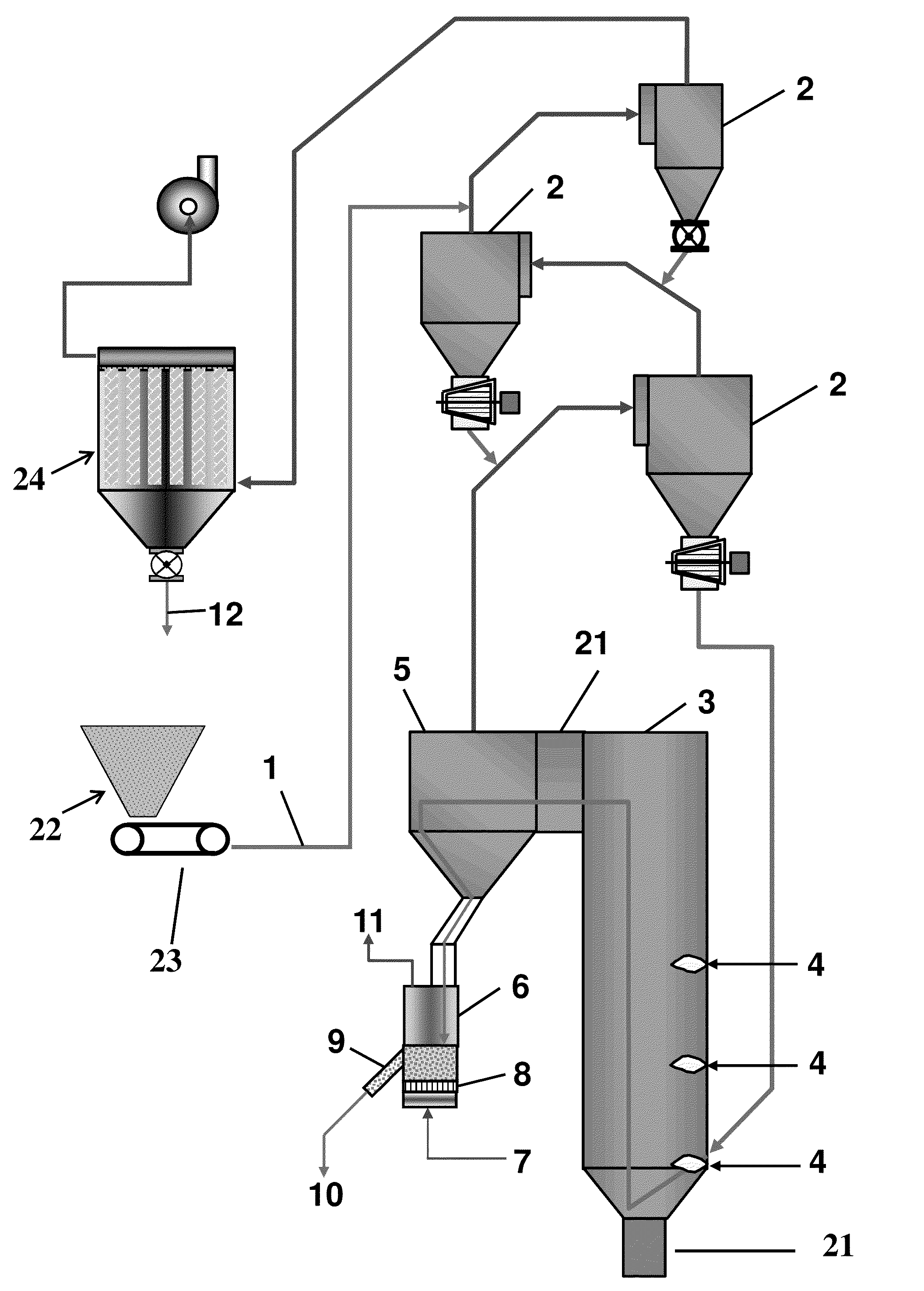System for the production of fine lime
a technology of production system and lime, applied in the field of fine lime production system, can solve the problems of increasing energy costs, reducing lime reactivity, and significant non-uniform calcinations across a wide particle size range, and achieve the effects of increasing the length of the flash calciner, increasing the capital cost of the system, and increasing energy costs
- Summary
- Abstract
- Description
- Claims
- Application Information
AI Technical Summary
Benefits of technology
Problems solved by technology
Method used
Image
Examples
Embodiment Construction
[0008]Reference will now be made in detail to the present preferred embodiments of the invention, examples of which are illustrated in the accompanying drawing.
[0009]A limestone particle mix advantageously treated by the present method will have a first portion (from about 50 to about 90 percent (by wt) of a finer fraction, i.e. particles having a nominal diameter of no more than about 1 mm) and a second portion (from about 10 to about 50 percent (by wt) of a coarser fraction, i.e. particles having a nominal diameter of greater than about 1 mm to no more than about 4 mm. It is for these size ranges that the process of the present invention is particularly effective. However, it is possible that the particle mix can also contain a negligible amount (less than about 10 percent (by wt) of particles having a nominal diameter of greater than about 4 mm to about 10 mm.
[0010]The FIGURE is a perspective view of a flash calciner 3 used in an exemplary embodiment of the present invention. The...
PUM
| Property | Measurement | Unit |
|---|---|---|
| diameter | aaaaa | aaaaa |
| diameter | aaaaa | aaaaa |
| diameter | aaaaa | aaaaa |
Abstract
Description
Claims
Application Information
 Login to View More
Login to View More - R&D
- Intellectual Property
- Life Sciences
- Materials
- Tech Scout
- Unparalleled Data Quality
- Higher Quality Content
- 60% Fewer Hallucinations
Browse by: Latest US Patents, China's latest patents, Technical Efficacy Thesaurus, Application Domain, Technology Topic, Popular Technical Reports.
© 2025 PatSnap. All rights reserved.Legal|Privacy policy|Modern Slavery Act Transparency Statement|Sitemap|About US| Contact US: help@patsnap.com


